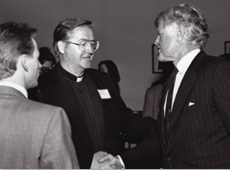How victims were failed by a state suppose to protect them
Posted By: November 03, 2017
Former Irish News reporter Barry McCaffrey has been researching the Loughinisland atrocity for more than a decade
Barry McCaffrey. Irish News. Belfast. Friday, November 3, 2017
It’s about Enniskillen, Omagh, McGurk’s Bar, Hillsborough and Grenfell Tower.
It’s the story of how victims and their families were failed by a State which was supposed to protect them.
It’s ultimately about a callous betrayal of the trust of citizens at the most vulnerable moments in their lives.
I first met the Loughinisland families in 2006 when I interviewed them for The Irish News.
Up until then, they had maintained 12 years of dignified silence, refusing to speak to the media, hoping that police would deliver on the promise of bringing the killers to justice.
Like so many other atrocities, that day never came for the families.
That is a reality of life in The North of Ireland, for some, and Northern Ireland, for others.
It is wrong to say that every policeman failed the Loughinisland families.
I met some policemen who did everything in their power to bring the killers to justice.
Unfortunately, I met others who utterly failed families who had placed so much trust in them.
It’s ironic that the majority of the people who worked on the documentary either came from the Unionist community or are not even from these shores.
It is a testament to their professionalism that their only goal in working on this project was to find the truth for the families, regardless of how ugly and depressing that truth would turn out to be.
This film didn’t set out to prove that there was collusion in the events that surrounded the June 1994 attack on Loughinisland. Police Ombudsman Dr Michael Maguire had already proved that in his 2016 report into the police failings in the murder investigation.
No Stone Unturned is an attempt by New York director Alex Gibney to take an entirely independent look at how the State delivered justice to its most vulnerable of citizens who lost loved ones in the conflict.
Gibney could have chosen Enniskillen, Sean Graham’s bookmakers, La Mon, the Dublin/Monaghan bombings or another name on the long list of atrocities.
Unfortunately, the stories are all too familiar.
Little did I realize in 2006 when I first met the Loughinisland families that I would spend the next 10 years trying to piece together the jigsaw of the events that surrounded the murders.
We were to find pieces of that bloodied jigsaw in South Africa and the Lebanon where one of the VZ58 rifles used in Loughinisland originated.
How much MI5 and the security services knew and how the weapons were allowed into Northern Ireland remains an unanswered question for the families of the 70 people killed by these rifles.
We uncovered some crucial pieces of the jigsaw but the puzzle is by no means complete.
Every day more evidence emerges which raises serious and uncomfortable questions about why no-one has been brought to justice for Loughinisland.
Critics will ask what, if anything, will this film achieve? Is it not better to leave the past behind to allow society to heal itself?
But for the Loughinisland families and so many others, the past will remain an open wound until they are given the truth they deserve.
If a democratic state cannot allow its citizens to know the truth about how and why six innocent men were allowed to die, then we are little more than cavemen.










